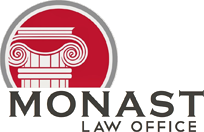
In late 2024, the U.S. Bureau of Labor Statistics indicated that “private industry employers reported 84,800 nonfatal workplace injuries and illnesses in Ohio.” Most employees suffered no significant lasting effects from their injuries and recovered fully.
Unfortunately, others weren’t so lucky. For some Ohio and Columbus workers, a workplace injury or illness leaves them with permanent physical damage—and life is forever changed. While they may still work, their earning capacity is often diminished, and their personal lives might not be the same. To help address some challenges these workers face, the Ohio workers’ compensation system offers permanent partial disability benefits.
Understanding Ohio Permanent Partial Disability Benefits
The Ohio Bureau of Workers Compensation (BWC) outlines that permanent partial disability (PPD) is offered to claimants who experience residual damage after a work-related illness or injury. Residual damage is defined as a permanent injury that cannot be resolved: an employee has recovered as fully as possible but will never return to the same physical state as before the injury. Often, this means this person can’t work and earn income in the same manner. Permanent partial disability benefits seek to address the loss of earning capacity created by the injury.
For example, consider a factory worker with a piece of equipment falling on his arm, breaking his elbow. He receives proper treatment and heals. However, after the injury, he cannot extend his arm. While he may perform other job functions, he’s suffered a permanent injury that could qualify for PPD benefits.
What Injuries Qualify for PPD in Ohio?
The BWC states that eligibility is open to “any worker who suffers a loss-of-use injury or psychiatric condition because of the work-related injury.” Conditions include, but aren’t limited to:
- An appendage or limb loss
- Back injury
- Chronic pain
- Hearing loss
- Knee injury
- Nerve damage
- Post-traumatic stress disorder and other psychological issues
- Vision loss in one eye
Working While Receiving PPD Benefits
Another common question we receive at Monast Law Office is, “Can I still work while receiving PPD benefits in Ohio?” Yes, depending on the nature of your impairment, you might still be able to accept a modified work assignment with your current employer or try another profession.
How Much Is Permanent Partial Disability in Ohio?
PPD benefits are awarded based on the extent of the condition. Injured workers must undergo an independent medical exam, and the physician determines the level of the impairment. Then, a percentage is assigned to the injury, and compensation reflects that percentage.
So, using the example above, the assessment might conclude our factory worker is experiencing 20% residual impairment. He would then be eligible to receive 20% of the maximum PPD compensation allowed for a certain period of time. Our skilled Ohio permanent partial disability lawyer, Jim Monast, walks you through every step of the process for a clear understanding of what you’re eligible to receive and for how long.
Like most workers’ compensation benefits, PPD benefits are paid every other week. Typically, the amount is based on two-thirds of the worker’s average weekly wage, though the amount may not exceed one-third of the statewide average weekly wage.
PPD workers’ compensation varies annually. The BWC publishes a chart each year outlining specific benefit amounts. Currently at print time, if your work injury left you permanently but not totally disabled, you can be awarded PPD benefits up to a maximum of $410.33 per week. This benefit is intended to make up for your loss of earning capacity.
How Monast Law Office Helps You Challenge BWC Impairment Rating
Even a small change in the rating from your medical exam can mean a significant difference in compensation for you and your family. However, with our experienced legal representation, it’s possible to challenge it if you think it’s too low. Here’s a brief outline of the process:
- Workers have 20 days from receiving the rating notice to file an objection with the BWC.
- Then, the worker appears before the Industrial Commission, which hears the claim and offers a ruling. The commission can uphold the initial rating, lower it, or increase it.
The BWC and the Industrial Commission will expect compelling and complete evidence of the injury and its effects on the workers’ life. Here’s how we take action:
- Gather evidence
- Obtain medical records
- Secure expert witnesses
- Prepare and file documents
- State your case at hearings
File a Workers’ Compensation Claim as Soon as Possible to Protect Your Benefits
State law requires that injured workers file for PPD benefits within six months. Maybe a PPD-eligible injury caused an employee to miss no work, while other injuries may have required time off and the awarding of temporary total disability (TTD) benefits. The six-month window begins:
- On the date of the injury. This applies if you didn’t miss work and were paid full wages by your employer following the injury; or if you missed work but weren’t compensated.
- On the date of the last payment of TTD benefits. This deadline applies if you missed work and received TTD benefits for the injury.
If you or someone you love suffered a work-related injury that left you with lasting damage, you may be eligible for permanent partial disability benefits. Reach out to us right away to learn what your rights are and all that we can do to protect them.
|
Related Links |


